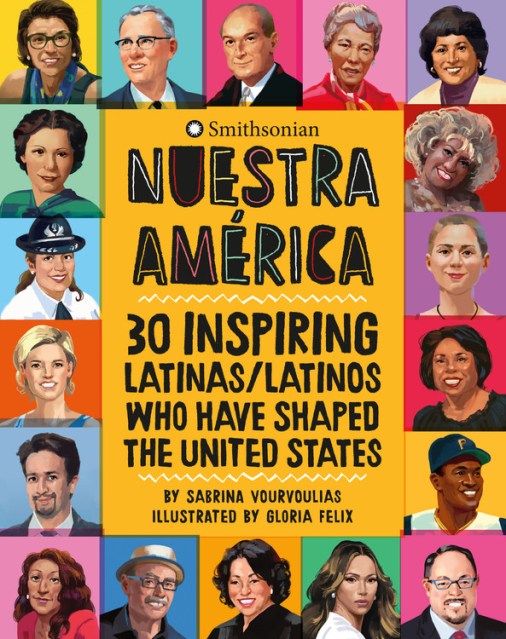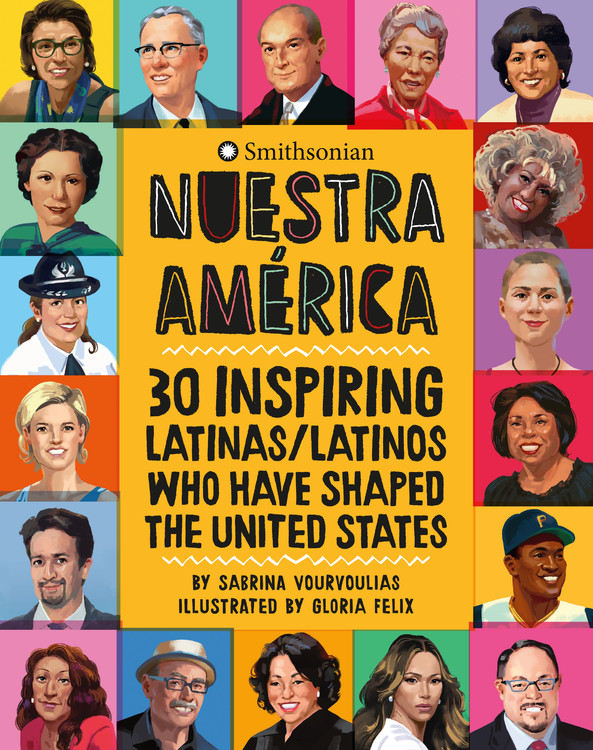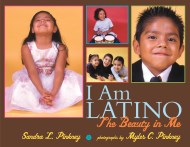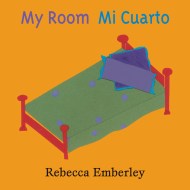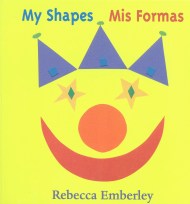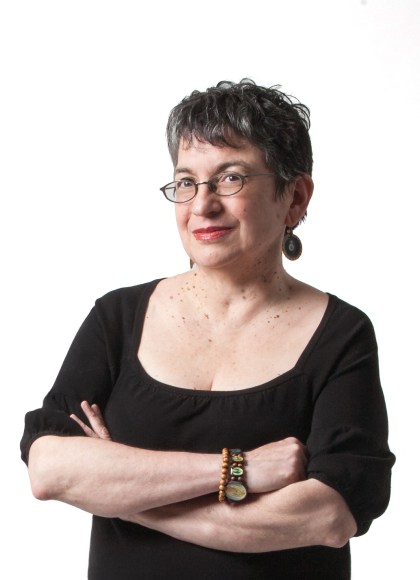Promotion
Use code MOM24 for 20% off site wide + free shipping over $45
Nuestra América
30 Inspiring Latinas/Latinos Who Have Shaped the United States
Contributors
Illustrated by Gloria Félix
Formats and Prices
Price
$9.99Price
$12.99 CADFormat
This item is a preorder. Your payment method will be charged immediately, and the product is expected to ship on or around September 1, 2020. This date is subject to change due to shipping delays beyond our control.
Also available from:
Celebrate 30 influential Latinas/Latinos/Latinxs in U.S. history with Nuestra América, a fully-illustrated anthology from the Smithsonian Latino Center.
Nuestra América highlights the inspiring stories of thirty Latina/o/xs throughout history and their incredible contributions to the cultural, social, and political character of the United States.
The stories in this book cover each figure’s cultural background, childhood, and the challenges and opportunities they met in pursuit of their goals. A glossary of terms and discussion question-filled reading guide, created by the Smithsonian Latino Center, encourage further research and exploration. Twenty-three of the stories featured in this anthology will also be included in the future Molina Family Latino Gallery, the first national gallery dedicated to Latina/o/xs at the Smithsonian.
This book is a must-have for teachers looking to create a more inclusive curriculum, Latina/o/x youth who need to see themselves represented as an important part of the American story, and all parents who want their kids to have a better understanding of American history. Featuring beautiful portraits by Gloria Félix, this is a book that children (and adults) will page through and learn from again and again.
Nuestra América profiles the following notable figures:
Sylvia Acevedo, Luis Álvarez, Pura Belpré, Martha E. Bernal, Julia de Burgos, César Chávez, Sandra Cisneros, Roberto Clemente, Celia Cruz, Olga E. Custodio, Óscar de la Renta, Jaime Escalante, Macario García, Emma González, Laurie Hernández, Juan Felipe Herrera, Dolores Huerta, Jennifer Lopez, Xiuhtezcatl Martínez, Sylvia Méndez, Lin-Manuel Miranda, C. David Molina, Rita Moreno, Ellen Ochoa, Jorge Ramos, Sylvia Rivera, María Elena Salinas, Sonia Sotomayor, Dara Torres, and Robert Unanue.
Genre:
-
Vibrant illustrations and a lively narrative come together to spotlight the stories of 30 Latinas and Latinos. These men and women have worked in a wide variety of fields, overcome great obstacles, and have contributed to the world in significant ways. Trailblazers include engineer Sylvia Acevedo, clinical psychologist Martha E. Bernal, baseball player Roberto Clemente, and U.S. Army Staff Sergeant Marcario García. Three to four pages are dedicated to each profile, with one page featuring an illustrated portrait of the individual against a colorful background. The text provides information about the early life of each person along with personal milestones, such as education, paths to careers, and accomplishments. Their struggles and contributions to the community are also listed. Each profile flows smoothly; the fascinating narratives are conversational in tone. Readers will gain an understanding of the obstacles these individuals faced as well as the role their heritage and culture played in their lives. A glossary is included as well as a reader's guide that includes a QR code. Discussion questions encourage thought and action with suggested activities.School Library Journal, starred review
VERDICT: An excellent nonfiction title focusing on luminous Latinas and Latinos, whose stories are sure to encourage and inspire hope in young readers everywhere. -
A project of the Smithsonian Latino Center, this collection, also released in a Spanish edition, features 30 biographies of men and women who have made their mark in entertainment, sports, education, politics, advocacy, music, science, and social justice. Skillfully rendered short portraits introduce readers to influential figures such as Pura Belpré, the first Puerto Rican librarian hired by the New York Public Library, who wrote children’s books retelling Puerto Rican folktales after seeing a need for wider cultural representation. Familiar figures such as labor leader Dolores Huerta and baseball player Roberto Clemente appear alongside lesser-known subjects such as military pilot Olga Custodio and climate activist Xiuhtezcatl Martinez. Highlighted by Gloria Félix’s lush, realistic art, the book’s message, “Latino history is American history,” rings out on every page.Publisher's Weekly
-
While this book will educate all readers, it importantly provides Latinx American children with inspirational role models from a diverse array of professions. A valuable title to have on the shelf.Booklist
- On Sale
- Sep 1, 2020
- Page Count
- 128 pages
- Publisher
- Running Press Kids
- ISBN-13
- 9780762497485
Newsletter Signup
By clicking ‘Sign Up,’ I acknowledge that I have read and agree to Hachette Book Group’s Privacy Policy and Terms of Use
